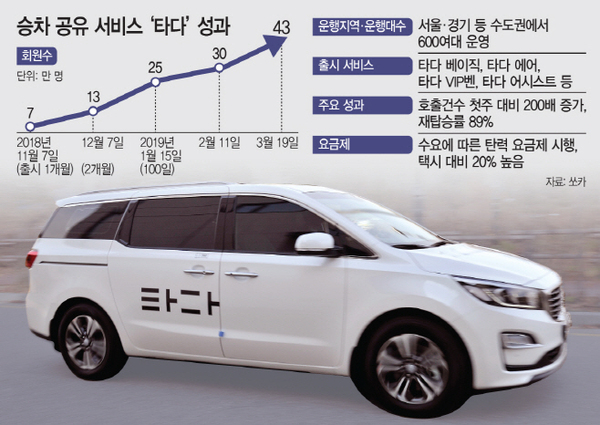List
Story > NEWS > Detail
[News] Platform Economy and Shared Economy
The digital platform promotes a sharing economy or a collaborative economy, while giving rise to a completely different level of new employment patterns called "gig work." Digital platforms that allow participants to share ‘labor force services’ as well as resources such as knowledge, technology, data, intellectual production, and space, are rapidly spreading across the boundaries of time and space.
Digital platforms have emerged as a key intermediary in demand and supply in the labor market, especially by demonstrating their ability to launch labor services (labor providers) to connect to demand. Although there are limitations in stereotyping the structure of platform labor because the market area in which the platform operates is very diverse and the way the labor force trades according to the nature of the work, based on analysis of the status of the platform economy, the platform can be divided into the following three types:

First, it is the type of commercial platform for final products or use, so-called asset platforms. For example, lodging platforms such as AirBnB and streaming music platforms such as Spotify. This type is often introduced as the most representative form of shared economy. In Korea, shared bikes and shared electric scooters are being used relatively frequently. Second, as a platform that provides a narrow sense of crowdwork, the type of work representative (mainly an enterprise) that entrusts an unspecified number of workers through the platform with specific tasks to the crowd walkers and is incorporated into the value creation process by the business where the work or products performed by the crowd walkers are demanders. Amazon Mechanical Turk, Clickworker, Twago and 99 design are representative platform companies. In our country, Cream and Wishcat are very well known a lot. The crowdwork platform becomes an online contact space for labor providers (providers of specific tasks or products) and consignees (entities), and the task consignees only need to do the work or the recovery of the produce, but it is not an important issue as to who is the labor provider.

Third, it is a labor service brokerage platform that intermediates labor for specific tasks to users (mainly individuals). It is being activated in the field of providing private services such as cleaning and transportation. The global platforms that provide transportation services include Uber, Lyft, Korea’s VCNC’s Tada service, and Delibero, Korea’s Baemin Riders and Mash Korea as a delivery platform that is thriving around Europe. Platforms are also prevalent in cleaning and other household service sectors, such as Helpping, Germany's careship.de and Korea's proxy housewives. Unlike the first type, which is a commercial asset-sharing platform, the second and third types are sometimes referred to themselves as marketplaces for the intermediation of labor, given that the platform links task-commissioned and labor-providers. In other words, since the platform is responsible for brokering use relationships or contracts between users and labor providers, it is basically assumed to be a broker’s position from a theoretical and practical standpoint. Most platforms also agree that those who provide labor in the service contract or the terms and conditions of the agreement provide labor as a freelancer in preparation for the legal assessment of such a role, and that the labor provider assumes both economic and legal responsibilities arising from the course of its performance as well as its own social protection.

Crowdwork is a form of outsourcing using external labor, derived from crowd-sourcing, which is typically characterized by an unspecified number of providing labor, as the word ‘labor by the masses’ implies. Crowdwork, which performs tasks such as requiring a brief, relatively simple, tangible task such as text input, article preparation, and data collection ⋅classification, or suggesting an effective product name or logo for the company's brand image, features that the counterpart of the party to the operator (the holder) who requires a specific performance or service is an unspecified number of Internet spaces without restrictions on the border.
The reason why it is possible to use an unspecified number of external labor forces across the border is the existence of platforms with users and providers of the workforce. In that sense, crowdwork is an essential feature of the use of external labor using the platform. Crowdwork can be called "direct" platform labor in that task consignees and trustees perform necessary tasks through the Internet, beyond the location boundaries. The platform is designed to provide the place (market) where consignees and trustees (whackers) wish to meet in the crowd and to collect market fees if transactions of goods or services are carried out in that market. However, it is hard to regard the platform business as simply an intermediary service for business consignment contracts. In other words, in order for goods and services to be exchanged smoothly, it is essential to ensure the performance of the contract so that the goods or services to be exchanged are clearly transferred to the other party, rather than simply providing the place for the consignee and trustee to find each other freely in the market.

In other words, the role of the platform in the crowdwork is much wider than that of simple intermediaries such as recruitment, contract management, provision of workplace, maintenance payment management and performance management. The fees collected by the platform are also more likely to be based on the use of the platform-wide services than simply the consideration for brokering the counterparty. In a non-face-to-face crowdwork, the business and the labor provider (crowd walkers) enter into a contract with the platform operator on the provision of labor services or on the occurrence of specific performance (results) and contract management, respectively. Typically, entities such as clickworker, textbroker, and testbirds have these trading models.
Companies that want to entrust their work through the platform do not have to hire those who are employed on their own. What qualifications or conditions are required to carry out the contract. It is common for platform operators to identify the capability and proficiency of labor providers (users) and to select them in advance. The platform operator sometimes conducts performance improvement training for the workers. In any case, the provision of an evaluation system to measure the performance of the labor provider is essential. The evaluation system is limited to a customer's satisfaction survey, and detailed performance measurements are made that can have a significant impact on future work consignment to the labor provider. The labor provider is not obliged to comply with all work consignments provided by the platform operator, and the platform operator may select specific labor providers with high quality capabilities in advance and entrust them with their work. In an over-face crowdwork, the trustee does not exercise his or her authority over the crowd walkers. The platform operator may ask the consignee for a detailed and detailed explanation to the extent that the content of the work no longer requires detailed instructions from the labor provider. Many do not want direct contact between companies and labor providers. Contact or connection between labor providers may also be strictly prohibited by the platform operator’s terms and conditions.
The digital platform promotes a sharing economy or a collaborative economy, while giving rise to a completely different level of new employment patterns called "gig work." Digital platforms that allow participants to share ‘labor force services’ as well as resources such as knowledge, technology, data, intellectual production, and space, are rapidly spreading across the boundaries of time and space.
Digital platforms have emerged as a key intermediary in demand and supply in the labor market, especially by demonstrating their ability to launch labor services (labor providers) to connect to demand. Although there are limitations in stereotyping the structure of platform labor because the market area in which the platform operates is very diverse and the way the labor force trades according to the nature of the work, based on analysis of the status of the platform economy, the platform can be divided into the following three types:

First, it is the type of commercial platform for final products or use, so-called asset platforms. For example, lodging platforms such as AirBnB and streaming music platforms such as Spotify. This type is often introduced as the most representative form of shared economy. In Korea, shared bikes and shared electric scooters are being used relatively frequently. Second, as a platform that provides a narrow sense of crowdwork, the type of work representative (mainly an enterprise) that entrusts an unspecified number of workers through the platform with specific tasks to the crowd walkers and is incorporated into the value creation process by the business where the work or products performed by the crowd walkers are demanders. Amazon Mechanical Turk, Clickworker, Twago and 99 design are representative platform companies. In our country, Cream and Wishcat are very well known a lot. The crowdwork platform becomes an online contact space for labor providers (providers of specific tasks or products) and consignees (entities), and the task consignees only need to do the work or the recovery of the produce, but it is not an important issue as to who is the labor provider.

Third, it is a labor service brokerage platform that intermediates labor for specific tasks to users (mainly individuals). It is being activated in the field of providing private services such as cleaning and transportation. The global platforms that provide transportation services include Uber, Lyft, Korea’s VCNC’s Tada service, and Delibero, Korea’s Baemin Riders and Mash Korea as a delivery platform that is thriving around Europe. Platforms are also prevalent in cleaning and other household service sectors, such as Helpping, Germany's careship.de and Korea's proxy housewives. Unlike the first type, which is a commercial asset-sharing platform, the second and third types are sometimes referred to themselves as marketplaces for the intermediation of labor, given that the platform links task-commissioned and labor-providers. In other words, since the platform is responsible for brokering use relationships or contracts between users and labor providers, it is basically assumed to be a broker’s position from a theoretical and practical standpoint. Most platforms also agree that those who provide labor in the service contract or the terms and conditions of the agreement provide labor as a freelancer in preparation for the legal assessment of such a role, and that the labor provider assumes both economic and legal responsibilities arising from the course of its performance as well as its own social protection.

Crowdwork is a form of outsourcing using external labor, derived from crowd-sourcing, which is typically characterized by an unspecified number of providing labor, as the word ‘labor by the masses’ implies. Crowdwork, which performs tasks such as requiring a brief, relatively simple, tangible task such as text input, article preparation, and data collection ⋅classification, or suggesting an effective product name or logo for the company's brand image, features that the counterpart of the party to the operator (the holder) who requires a specific performance or service is an unspecified number of Internet spaces without restrictions on the border.
The reason why it is possible to use an unspecified number of external labor forces across the border is the existence of platforms with users and providers of the workforce. In that sense, crowdwork is an essential feature of the use of external labor using the platform. Crowdwork can be called "direct" platform labor in that task consignees and trustees perform necessary tasks through the Internet, beyond the location boundaries. The platform is designed to provide the place (market) where consignees and trustees (whackers) wish to meet in the crowd and to collect market fees if transactions of goods or services are carried out in that market. However, it is hard to regard the platform business as simply an intermediary service for business consignment contracts. In other words, in order for goods and services to be exchanged smoothly, it is essential to ensure the performance of the contract so that the goods or services to be exchanged are clearly transferred to the other party, rather than simply providing the place for the consignee and trustee to find each other freely in the market.

In other words, the role of the platform in the crowdwork is much wider than that of simple intermediaries such as recruitment, contract management, provision of workplace, maintenance payment management and performance management. The fees collected by the platform are also more likely to be based on the use of the platform-wide services than simply the consideration for brokering the counterparty. In a non-face-to-face crowdwork, the business and the labor provider (crowd walkers) enter into a contract with the platform operator on the provision of labor services or on the occurrence of specific performance (results) and contract management, respectively. Typically, entities such as clickworker, textbroker, and testbirds have these trading models.
Companies that want to entrust their work through the platform do not have to hire those who are employed on their own. What qualifications or conditions are required to carry out the contract. It is common for platform operators to identify the capability and proficiency of labor providers (users) and to select them in advance. The platform operator sometimes conducts performance improvement training for the workers. In any case, the provision of an evaluation system to measure the performance of the labor provider is essential. The evaluation system is limited to a customer's satisfaction survey, and detailed performance measurements are made that can have a significant impact on future work consignment to the labor provider. The labor provider is not obliged to comply with all work consignments provided by the platform operator, and the platform operator may select specific labor providers with high quality capabilities in advance and entrust them with their work. In an over-face crowdwork, the trustee does not exercise his or her authority over the crowd walkers. The platform operator may ask the consignee for a detailed and detailed explanation to the extent that the content of the work no longer requires detailed instructions from the labor provider. Many do not want direct contact between companies and labor providers. Contact or connection between labor providers may also be strictly prohibited by the platform operator’s terms and conditions.



